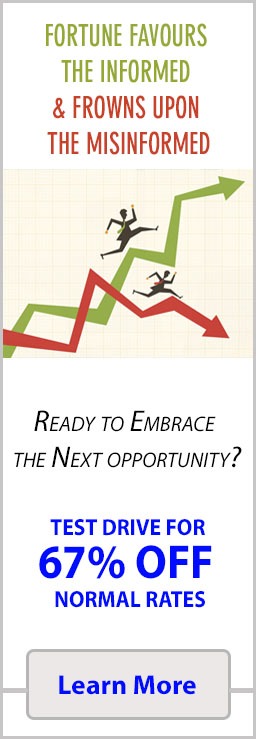Can You Write Off Stock Market Losses? The Art of Transforming Setbacks into Strategic Gains
Oct 8, 2025
Turning Losses into Strategic Firepower: Writing Off Pain, Weaponising Chaos
When markets nosedive and portfolios bleed, most investors ask timid, accountant-shaped questions: “Can I write this off?” A better question is: “How do I turn this pain into strategic firepower?” Losses aren’t just line items for tax season; they’re signals, catalysts, and psychological tests. The weak see them as tombstones. The strong see them as supply drops in a battlefield, while others are fleeing.
Market downturns expose more than balance sheets—they expose temperament. The brutal clarity of red ink forces a choice: capitulate like the herd, or reforge strategy in the crucible. Fear doesn’t just cloud judgment; it creates mispricings. Those mispricings are invitations—for those who keep their heads while others howl.
Mass Psychology: The True Engine of Loss Cycles
Markets crash not because the spreadsheet changed overnight, but because the collective mind cracked. Fear doesn’t emerge in isolation—it cascades.
Cognitive biases take the helm:
- Overconfidence whispers, “I’ll time this perfectly,” right before the plunge.
- Loss aversion amplifies every dip into existential dread, pushing premature capitulation.
- Bandwagon effect turns isolated fear into synchronized panic.
Look at 2008. When housing collapsed, fundamentals mattered less than the herd’s synchronized exit. Institutions imploded, yes—but the feedback loop of panic did the real damage. Investors fled in droves, cementing the collapse they feared.
Or March 2020, when COVID’s uncertainty froze the global psyche. The Dow dropped 10% in a day, VIX exploded past 80, and Twitter threads became prophecy scrolls of doom. It wasn’t rational analysis driving the selloff; it was adrenaline.
Yet, buried in that frenzy were fat pitches. Buffett wasn’t hyperventilating on live TV. He was watching behavior. The contrarians read the sentiment vectors, not the headlines. RSI readings hit sub-30. MACD divergences flagged exhaustion. Price and psychology decoupled. That’s when the hunters moved in.
Hybrid Warfare: Converting Panic into Profit
So, can you “write off” losses? Yes—but not in the simplistic, IRS-form sense the herd obsesses over. The real write-off is psychological. It’s the moment you convert loss from an anchor into ammunition.
One of the most lethal hybrid strategies during high-volatility regimes is selling puts on blue-chip stocks after capitulation events. Why? Because panic inflates option premiums to absurd levels. You’re not speculating—you’re getting paid to take the other side of fear.
Picture this:
A fundamentally strong stock gets wrecked in a panic. Say it’s trading at $80 after being crushed from $120. You sell puts at a $70 strike. Volatility’s through the roof, so you pocket a fat premium upfront.
Two outcomes:
- Stock recovers. You keep the premium.
- Stock dips below $70. You buy it at a discount, effectively entering at panic pricing while the herd hyperventilates.
This is not heroism. It’s calculated opportunism. It’s using the market’s fear as a funding source for future leverage.
And here’s where the two-stage strike comes in: reinvest those fat premiums into long-dated call options on the same blue-chip targets. You’re creating asymmetric upside: minimal cost, explosive recovery potential.
During the 2020 crash, this tactic turned disciplined traders into predators. While retail capitulated at the lows, those positioned in LEAPS on TSLA, MSFT, and NVDA rode recoveries that delivered returns of 3x to 10x. They didn’t “ride out the storm.” They weaponised it.
Strategic Alchemy: Turning Volatility into Amplified Gains
For those willing to step off the well-trodden path of timid indexing and emotional panic, a more potent arsenal awaits. Advanced strategies aren’t for the faint-hearted, but for those who understand that market chaos is a forge, not a funeral, they offer exponential potential.
Start with options premium reinvestment. Instead of sitting on the income like a squirrel hoarding nuts, aggressive traders redirect those funds into high-beta plays—the volatile, fast movers that thrive when markets rebound. These aren’t reckless YOLO bets; they’re calculated allocations into assets with magnified elasticity. High-beta names, which were crushed during the panic, snap back like coiled springs once liquidity returns and sentiment stabilises.
Example: During the 2020 collapse, selling puts on AAPL and MSFT yielded fat premiums. Those premiums, when deployed into LEAPS on NVDA and TSLA—stocks with far higher beta—produced explosive multipliers when the market reversed. This two-tiered structure—defensive income generation paired with aggressive upside positioning—is how professionals turn drawdowns into asymmetric strikes.
Dollar-cost averaging (DCA), when weaponised with discipline, is another underestimated tactic. Consistent investment through volatility lowers the average entry price and removes emotion from the equation. During the 2008 crash, investors who adhered to DCA in S&P 500 ETFs saw their cost basis decline while future returns increased. DCA isn’t a timid “set it and forget it” mantra—it’s strategic persistence against psychological noise.
ETFs also serve as stealth weapons during downturns. By spreading exposure across sectors, they allow investors to exploit dislocation without betting the farm on one fragile ticker. Combining ETFs with targeted leverage (via LEAPS or tactical margin) can build resilient, balanced portfolios designed not just to survive turbulence but to harvest it.
Timeless Psychology, Tactical Precision
The ancients understood uncertainty better than most modern traders drowning in CNBC chatter. The Stoics didn’t fear volatility—they expected it. Seneca’s line cuts to the core: “We suffer more often in imagination than in reality.” Most investors lose not because the market defeated them, but because their imaginations did—painting nightmare scenarios while opportunities sat quietly, waiting.
The fusion of timeless wisdom with modern tactics transforms fear from a paralytic into a strategic compass. Accepting uncertainty as a permanent feature of markets is liberating. It’s not about “avoiding losses” but about weaponising setbacks. Every drawdown carries embedded information about crowd behaviour, sentiment extremes, and value dislocations. Those who analyse rather than agonise win.
This mindset shift is the hinge between mediocrity and mastery. Markets punish emotional rigidity but reward adaptive clarity. The investor who sees uncertainty as an ally—not an adversary—acts while others freeze.
Conclusion: Fire in the Ruins
So, can you write off stock market losses? Not in the timid checkbox sense the herd obsesses over. Real write-offs happen in the mind—when you convert despair into structure, setbacks into strategy, and volatility into asymmetric opportunity.
When panic spreads, the herd flees into excuses. The few sharpen their tools. Mass psychology reveals the cracks; hybrid tactics exploit them. Historical wisdom keeps your head steady while modern instruments extend your reach. This is not tax planning—it’s strategic evolution.
Every crash is a revelation: it shows who understands the game and who’s still reacting like Pavlov’s trader—salivating at the bell of panic. Losses are inevitable; paralysis is optional.
The markets will break again. Sentiment will swing from ecstasy to terror. Narratives will crumble. Algorithms will convulse. And while the herd chants its post-mortems, the disciplined will strike with quiet precision, building the foundations of the next fortune.
The battlefield doesn’t reward hope or excuses. It rewards clarity, adaptability, and strategic ferocity. If you can write off the illusion, what remains is power.











